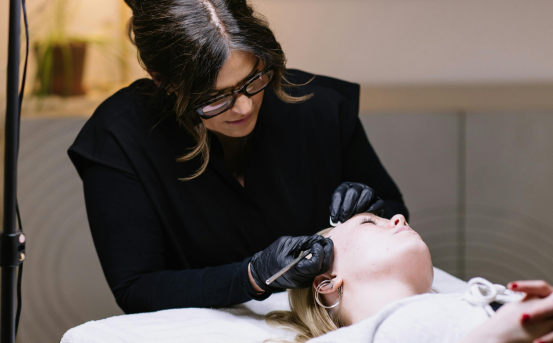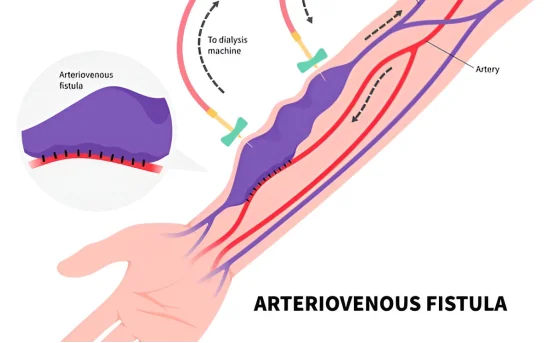Subcision for Acne Scars Treatment can deeply affect one’s self-esteem and confidence, especially when they are deep, pitted, or tethered. While topical treatments and peels may offer some improvement, certain types of scars like rolling or atrophic scars require a more targeted approach. One such effective method is subcision for acne scar treatment. This minimally invasive dermatological procedure has gained popularity for its ability to significantly improve the appearance of depressed acne scars.
This is where subcision for acne scars comes into play a proven, dermatologist-recommended treatment designed to target the root cause of depressed scars beneath the skin. Subcision is a minimally invasive surgical technique that breaks up the fibrotic tissue tethering the scar to deeper skin layers, allowing the skin to rise and heal naturally. It is particularly effective for patients looking to improve the appearance of rolling scars, boxcar scars, and other bound-down acne scars that have persisted despite other treatments.
What is Subcision for Acne Scars Treatment?
Subcision for acne scars treatment, also known as subcutaneous incisionless surgery, is a minor surgical procedure used to treat depressed, tethered acne scars. The treatment works by releasing the fibrous bands pulling the scar down into the skin, allowing the skin to lift and heal more evenly over time.
A dermatologist uses a special needle or blade (commonly a Nokor needle) to manually break the fibrotic strands beneath the scar. This not only releases the tension causing the indentation but also triggers a healing response. The body begins to produce collagen, which fills in the scar depression naturally over the next few weeks to months.
Types of Acne Scars Treated with Subcision
Subcision for acne scars treatment is not ideal for all types of acne scars. It is most effective for :-
-
Rolling scars :- These are shallow, broad depressions with sloping edges.
-
Boxcar scars :- Wider scars with well-defined edges that may benefit from subcision when tethered.
-
Tethered or bound-down scars :- Scars that are attached to deeper layers of the skin by fibrous tissue.
It is not effective for ice pick scars, which are very narrow and deep. However, subcision can be combined with other treatments for comprehensive scar revision.
The Subcision Procedure: What to Expect?
Subcision for acne scars treatment is typically performed in a dermatology clinic and does not require general anesthesia. Here’s a step-by-step overview of what the procedure involves :-
- Consultation and Evaluation :- A dermatologist will evaluate your skin and scar types to determine if you are a suitable candidate for subcision. Sometimes, photographs and skin mapping are used to plan the treatment.
- Preparation :- The area is cleaned, and a local anesthetic is applied to numb the treatment site. This ensures the procedure is painless and comfortable for the patient.
- Needle Insertion :- A special subcision needle is inserted just under the skin. The dermatologist moves the needle in a fanning motion to break the fibrous bands tethering the scar.
- Bleeding and Swelling :- Some minor bleeding, swelling, and bruising are common as a result of the tissue trauma. Pressure is applied after the procedure to minimize bleeding.
- Post-Procedure Care :- The skin is cleaned again and a dressing may be applied. Most patients are free to go home shortly afterward.
- Benefits of Subcision for Acne Scars
Subcision is considered one of the most effective treatments for rolling scars. Here are some key benefits :-
-
Minimally invasive :- No surgical incisions or stitches are needed.
-
Stimulates collagen :- Promotes natural skin repair and long-term improvement.
-
Improves skin texture :- Results in smoother and more even skin over time.
-
Quick recovery :- Most people return to daily activities within a few days.
-
Long-lasting results :- With proper care, improvements can be permanent.
For enhanced results, subcision is often combined with treatments like micro needling, PRP (Platelet-Rich Plasma), dermal fillers, or fractional laser.
Downtime and Recovery
After subcision, mild to moderate bruising and swelling is normal and can last for up to 7–10 days. You may also notice slight pain or tenderness at the treatment site. Here’s what to expect during recovery :-
-
Day 1-2 :- Swelling and bruising are most noticeable. Apply ice packs to reduce inflammation.
-
Day 3-5 :- Bruising begins to subside. You can return to work with makeup if needed.
-
Week 1-2 :- Skin continues to heal. Avoid sun exposure and strenuous exercise.
-
Weeks 4-6 :- Collagen production increases. Gradual improvement in scar appearance becomes more visible.
Always follow your dermatologist’s instructions for aftercare, including avoiding exfoliants, harsh skincare, and sun exposure for several weeks.
Risks and Side Effects
Although subcision is generally safe when performed by a trained dermatologist, there are some potential side effects.
-
Bruising and swelling
-
Mild pain or tenderness
-
Temporary hyperpigmentation
-
Infection (rare)
-
Formation of lumps or nodules (usually temporary)
Choosing an experienced practitioner significantly reduces the risk of complications.
Who is a Good Candidate for Subcision for Acne Scars Treatment?
You may be a good candidate for subcision if :-
-
You have depressed, rolling, or tethered acne scars
-
You are in generally good health
-
You have realistic expectations
-
You are committed to follow-up care and possibly combining treatments
Subcision is not suitable for active acne, keloids, or hypertrophic scars.
Combining Subcision for Acne Scars Treatment with Other Treatments
For best results, subcision for acne scars treatment is often combined with complementary acne scar treatments, such as :-
-
Micro needling :- Further stimulates collagen and enhances healing.
-
Platelet-Rich Plasma (PRP) :- Boosts collagen formation and reduces inflammation.
-
Laser Resurfacing :- Improves overall skin texture and tone.
-
Dermal Fillers :- Instantly lift depressed scars while collagen builds over time.
-
TCA CROSS :- Ideal for treating ice pick scars in combination with subcision.
A personalized treatment plan combining multiple methods offers optimal results for complex acne scarring.
Before and After Results
While results vary, many patients see noticeable improvements after just one subcision for acne scars treatment session. Multiple sessions spaced 4–6 weeks apart may be needed depending on the severity and number of scars.
Before treatment, scars appear deep, uneven, and bound down.
After several treatments, scars are visibly lifted, skin texture is smoother, and pigmentation may improve.
Conclusion
If you’re struggling with indented or tethered acne scars, subcision for acne scars treatment can offer significant and lasting improvement in skin appearance. This minimally invasive treatment is highly effective for rolling scars and works even better when combined with micro needling, PRP, or laser treatments.























